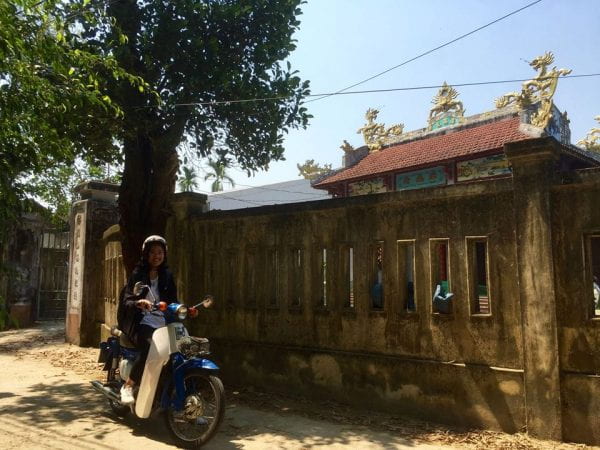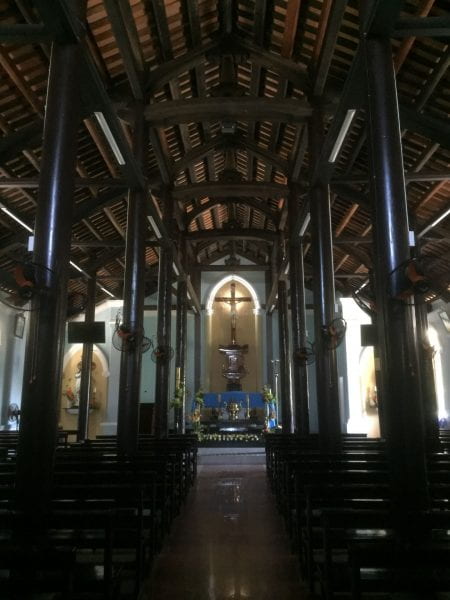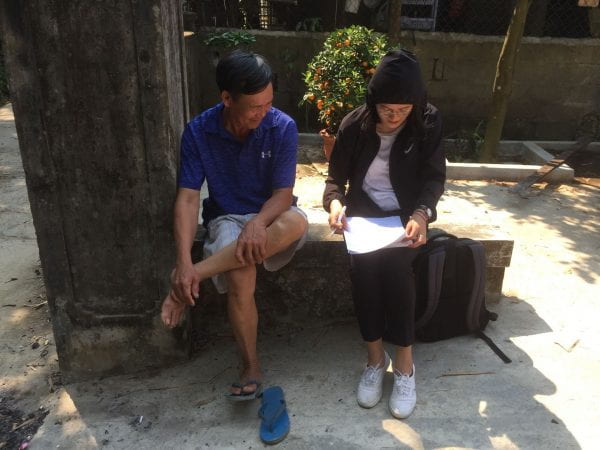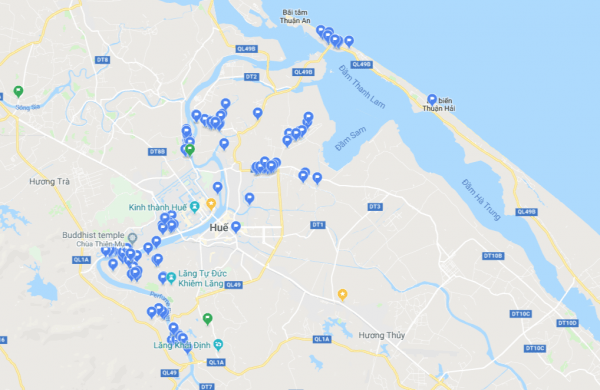I stepped into the ocean, the water was nice and cool, the sand was so smooth and soft. I lied down, letting the gentle waves washing over me. Strangely, I had never before felt so connected to this city, nor to the country I call home. I was surprised it had never occurred to me before that Huế had such beautiful beaches, so as the many wonderful things that I discovered during my one-month long field trip.
My historian friend who worked on Hue for her dissertation kept telling me that one week would not be enough for me to get to know Hue and the villages, given my unpopular topic of ancestral homes in the city. I am now still glad that I took her advice.
I started out renting a bike, looking at Google Maps, believing I could navigate through the villages, just as I did in any other city I had been to. I was too confident. Most places are not registered on the maps, and often time one can only find their way by words of mouth. After reading a few books on the villages, I jotted down a couple that I would want to see first, looking for those ancestral halls. However, being in the villages themselves really change what I thought I would find, not saying that I had many preconceptions or expectations from the first place. While though many of the ancestral halls had been heavily renovated, which was disappointing to me, I found a plethora of fascinating structures that are deeply rooted in the city’s traditions, history and culture.
Traveling around, I felt there was a pattern of spatial organization in these villages: all the spiritual structures seem to line up in an order along and facing toward the “lighting route” (most of the time the river or a canal), which extremely fascinates me: a shrine for the first settlers, the communal hall, a Buddhist temple, a female goddess shrine, then a male god shrine, then ancestral halls, then finally a shrine for the ghosts. The more villages and places I visited, the clearer the pattern seemed to me. I no longer thought I knew what I was looking for, but I got excited about knowing what questions to ask.
What about the well? What about the First settlers? The relic hunting spirit just took over me, I forgot about my initial attempt: looking at the ancestral halls. Now I wanted to see that one goddess shrine that was built even before 1945, that ghost shrine that I was told existed before the 100-year-old man was even born or that Catholic church with the structure of a Nhà Rường (Huê’s traditional wooden house).
I started feeling overwhelmed with all that I was exposing myself to; I went to VICAS. I met these wonderful researchers who had been doing research on different parts of villages life in Hue. They told me about this one village at the beginning of the Huong River (the most important water feature in the city), where the locals still worship Thiên Y An Na, a Chăm people’s Goddess. Then along the river, another village whose means of living based on the forestation, which would worship different local gods from one that relies on fishing ear the ocean. Thus, my new research direction: spiritual life in Hue’s villages, looking at a system of villages along the Huong River, testing my hypothesis about their spatial organization.
I got on my bike again, eager with this new research. I went through almost ten villages, one by one, carefully marking every single spiritual/ religious structures I found. Starting with looking for the head of the village, often time the oldest man in town. I was always taken aback by the hospitality and eagerness to share. I would be given books, taken to the place, sometimes in the middle of the forest, hearing stories about their past, their families, and never met one without such pride about their lineage and the village tradition. All the villagers were very helpful and excited to show me the way; I would even be invited into their houses, chatting with them, looking at their family treasures. In Hải Cát, a village up the Hương river, in the mountains, the old village men even took me deep into the forest to look at all of those ancient shrines that they were told about by their grandfathers.
I started noticing the differences in architecture between the different kinds of structures and their purposes. The goddess shrine that resembles a building but not to be occupied or enter: it is more symbolic than functional. The ghost shrine that is often found at the boundary of the village, before entering another one: a symbolic end and a symbolic beginning… and so on. They only fascinated me more and more.

A local goddess shrine hidden in the paddy rice fields – Nguyệt Biều Village, Huế, Picture by Phi Nguyen
As I put more dots on my Google Maps, taking more pictures, I felt also this strong connection to my country, to a past that I had never known but now unfolding itself in front of me. Each time I see an intact structure, I think I felt no less of a pride than the villagers do, a pride in our craftsmanship, our country and its long history and rich culture.
— Phi Nguyen







